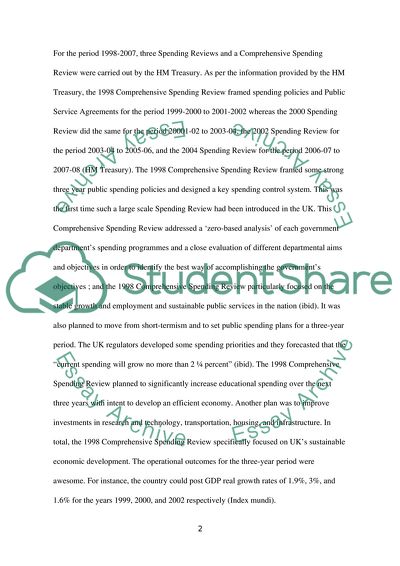Cite this document
(Critically analyze how successful the British governments use of Essay - 2, n.d.)
Critically analyze how successful the British governments use of Essay - 2. https://studentshare.org/finance-accounting/1791601-critically-analyze-how-successful-the-british-governments-use-of-spending-reviews-has-been-as-a-way-of-making-government-more-strategic-your-analysis-should-cover-spending-reviews-during-the-periods-of-growth-1998-2007-and-austerity-2008-onw
Critically analyze how successful the British governments use of Essay - 2. https://studentshare.org/finance-accounting/1791601-critically-analyze-how-successful-the-british-governments-use-of-spending-reviews-has-been-as-a-way-of-making-government-more-strategic-your-analysis-should-cover-spending-reviews-during-the-periods-of-growth-1998-2007-and-austerity-2008-onw
(Critically Analyze How Successful the British Governments Use of Essay - 2)
Critically Analyze How Successful the British Governments Use of Essay - 2. https://studentshare.org/finance-accounting/1791601-critically-analyze-how-successful-the-british-governments-use-of-spending-reviews-has-been-as-a-way-of-making-government-more-strategic-your-analysis-should-cover-spending-reviews-during-the-periods-of-growth-1998-2007-and-austerity-2008-onw.
Critically Analyze How Successful the British Governments Use of Essay - 2. https://studentshare.org/finance-accounting/1791601-critically-analyze-how-successful-the-british-governments-use-of-spending-reviews-has-been-as-a-way-of-making-government-more-strategic-your-analysis-should-cover-spending-reviews-during-the-periods-of-growth-1998-2007-and-austerity-2008-onw.
“Critically Analyze How Successful the British Governments Use of Essay - 2”. https://studentshare.org/finance-accounting/1791601-critically-analyze-how-successful-the-british-governments-use-of-spending-reviews-has-been-as-a-way-of-making-government-more-strategic-your-analysis-should-cover-spending-reviews-during-the-periods-of-growth-1998-2007-and-austerity-2008-onw.


